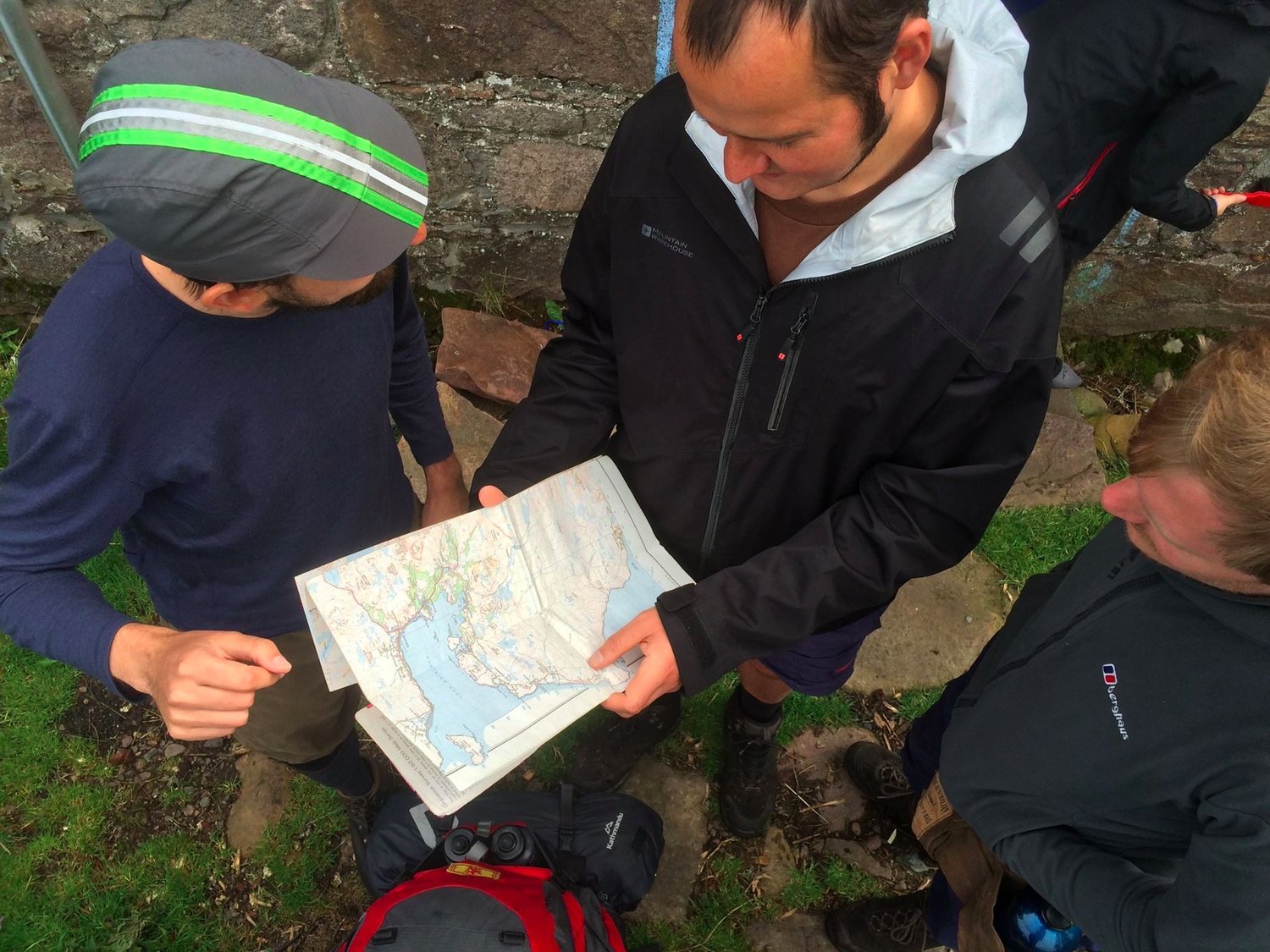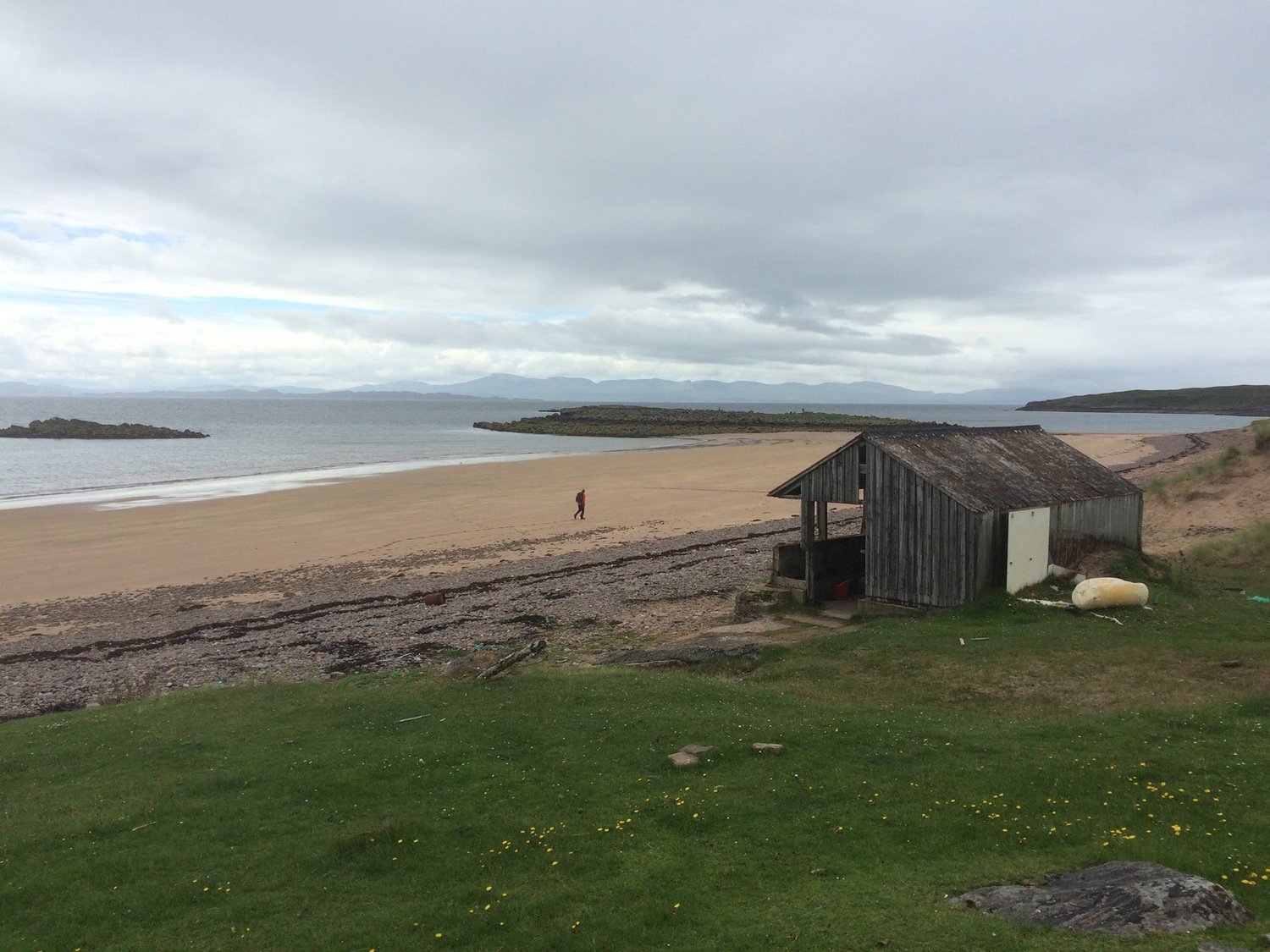You’re about to read the followup to Rebooting My Design Practice. Part 1: Positioning, Pricing And Networking. (Recap: my income has risen around £15k every year since I went freelance on 2012, to raise your rate you need to position yourself as someone who solves a specific problem, mate’s rates are dangerous, build a network already)
Disclaimer: much of the framework I laid in Part 1 of this series was not converted into actions, for reasons you’re about to discover.
For almost all of the past year I was permalancing (yes that is a word now, even though my spellchecker says otherwise) as a digital designer at a branding agency.
Aside from a healthy bank balance and the super smart people I met working there, the end result on a personal level was that I did almost no work with my own clients, felt burnt out creatively, and started to wonder if I even wanted to live in London any more.
Hence the month I spent decompressing in Scotland this summer; first cycling around Skye, then hiking in the wilds of Applecross and beyond. Here are a few photos borrowed from one of my walking friends (cheers Jon!) to set the scene…




So, no more epic permalancing stints for James.
During my downtime this summer, I’ve spent a fair chunk of time thinking (again) about how my freelance design business operates.
Because freelancing should be enabling
Building my own roster of clients will give me a chance to keep my other plates spinning… like writing for you on this blog and on CycleLove.
After all, having the freedom to pursue side projects, run experiments, and go on crazy adventures was why I went freelance in the first place.
Insert obligatory reminder about my free Seven Things You Should Do Before Going Freelance course here
Of course I did know about the virtues of independence already, it’s just that I took my eye off the prize when work was offered on a plate to me last year.
Because writing project proposals is boring
What specifically can I do to build a better freelancing operation for myself?
One thing that’s started to grate is the constant churn of meeting potential clients, writing proposals… and then hearing nothing.
I’ve realised that at some meetings I’ve given away all my secret sauce for free. Instead of convincing the client that I can do the work, I’ve actually gone ahead and told them exactly what I would do, and then they’ve not hired me as a result because they don’t need to.
How to set things straight then, and write less proposals?
There are two parts to this.
Fisrly, this week I launched Galvanise, my first productized consulting offer.
If you’re thinking “Huh? Productized what?” — the idea with productized consulting is that you offer a fixed service, with a fixed scope, at a fixed price. All of which means that you don’t need to write a proposal to get started, you just need a sales page — one that a potential client can read, learn everything they need to know, and be ready to click ‘Buy’ at the end of.
By the way, I’m deliberately writing productized with a “z” because this is something I’ve learnt about from the US of A.
(At this point I’d like to give a shoutout to the guy who emailed in his concerns about putting a price alongside the design services listed on my website. There is no absolute wrong or right way to sell yourself professionally… I just want to experiment a bit).
What does this look like in practice then?
Recently I worked with the cycling brand Vulpine to review both the UX and the SEO aspects of their website. The deliverable was a written report, detailing any problems I found and a prioritised course of action for making things better.
And this, in essence, is what you’ll get if you order a Galvanise report from me: a concrete plan for making your website (and your business) better.
It’s not a perfect offering by any means… as I need to make it much more specific in terms of the expensive problem that it solves for clients. This might mean targeting it specifically at cycling brands, and even more specifically at the e-commerce websites of cycling brands. (I can then use CycleLove to feed traffic to the page and see what happens).
But it feels like a good start, and given the feedback from Vulpine I’m confident that Galvanise is a product that other clients will get great results from.
The second way to spend less time writing proposals is to offer paid roadmapping sessions as a precursor to starting a project. I haven’t actually tried this yet myself, but the idea is that your client pays you to help create a plan of action, rather than you putting everything into a proposal and perhaps not getting the job.
A key benefit of roadmapping is that it reduces risk for everyone — as your client can start with a smaller engagement before investing in the full project. I’ll let you know how it goes in Part 3 of this series next year.
Because you need a sales pipeline
Of course a sales pipeline needs several pieces of pipe to go anywhere, so there’s much more work to be done to get my offering out into the world.
Kai Davis has a great guide to promoting your consulting services which suggests reverse-engineering your sales funnel:
Work backwards from your productized service and ‘build out’ each element in your funnel:
For your productized service, what does the drip email sequence look like? How does it sell your service?
For your lead magnet, how does it relate to the drip email sequence that they’ll be receiving? How do both the lead magnet and the service solve the same ‘expensive problem’ for the subscriber?
For the article that the visitor arrives at, how does it naturally lead to the next step of “…and when you get my lead magnet you’ll learn how to solve this expensive problem!”
On to the next problem…
Because you can’t have everyone as a client
How do you go about finding potential clients and converting them into paying customers?
More often than not, gut feeling can do much of the heavy lifting when it comes to evaluating clients.
But you still need to think carefully, rationally, critically, really fucking hard (seriously, promise me that you will, ok?) about the potential work that’s on the table.
Can this person afford to hire you? Are they someone you could get on with on a personal level over several weeks or months? And can you actually help their business?
Yup, you probably need…
A bunch of useful questions to ask when qualifying potential clients.
Here’s my shopping list of questions to sound out potential clients.
Usually I’d ask these by Skype or in a phone call, but sometimes it’ll happen in person at a first meeting.
Tell me about your company
An easy question to get started with but a good way to break the ice… You might well have figured this out in advance, but it’s still good to hear it straight from the horse’s mouth. (You also need to be clear on your client’s business model — how does their company actually make money?)
How has business been over the past year?
Notice that this question still isn’t about a specific project, but the business as a whole. Knowing this can also help you figure out what kind of budget a client might have available.
What do you want to achieve with this project?
“I want a new website” isn’t a business plan, it’s just a statement of the end result. You want to be sure your client has a solid set of reasons for embarking on a project, and a plan for what happens afterwards. (For example, how will they know if the project has been successful? Is there an actual metric you can track?)
You’ve mentioned a few things - which one would have the biggest impact in the short term?
To ensure that you focus your effort on the right problem.
Why start now, not six months ago or six months further down the line?
If your client has a can of worms, this question can start to open it for you. You should learn not just about your client’s thought process, but what’s been happening / will be happening with their business.
How will you know if the project has been successful?
Metrics are a great way to measure this. (And handy when it comes to writing a case study later on, because you have an easily quotable measure of success).
Why choose me to work on this?
Knowing specifically what your client likes about you is handy if you do have to write a proposal.
What questions do you have for me?
This will give the client a chance to go back over anything you’ve missed.
Because it’s about more than money
Ultimately, you need to consider each client’s project as a potential calling card for future clients, and an opportunity to develop your own skills and experience.
There are also some questions you should be asking yourself, like:
- Does this person trust me, and believe in my skills?
- Do I think this person’s business can be successful?
- Have they got their shit together? (organisationally speaking)
- Will this job help me to grow my business?
- Do both of us agree on and uderstand the goals of the project?
And lastly, the most important one…
What does my gut tell me about this client?
How do you qualify (and sell your services to) new clients?
I’d love to know what works for you when it comes to finding, qualifying and working with clients — please share your insights in the comments below.
Posted to Freelancing, Graphic Design, Uncategorised in 2016.